The History Of Honda CITY
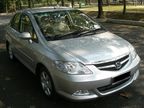
The Honda City is a subcompact car manufactured by the Japanese manufacturer Honda since 1981 for the Asian market.
Since 2002, the City is also known as the Honda Fit Aria. It is a subcompact sedan that uses Honda's Global Small Car platform, which is also used by the Fit/ Jazz (a five-door hatchback), the Airwave (a wagon version of the Fit Aria/ City), the Mobilio, and the Mobilio Spike. One of the characteristics shared by the Fit/ Jazz, City/ Fit Aria, and Airwave, is the location of the fuel tank. Rather than placing it under the rear seats, it is located under the front seats, thereby freeing up valuable room in the back.
The first Honda City was made in 1981.
Honda replaced the original City in 1986 (designated GA1), with an update in 1989 (GA2). This model was produced until 1994. The Fit name also first appeared as a trim variant of the City. There was no convertible model. In most European and Australasian markets, the City's market position was filled by the Honda Logo in 1999.
The third-generation Honda City, codenamed SX8, was based on the EF Civic platform. It was designed for and sold in the South East Asian market only.
This City is still a subcompact slotting beneath the Honda Civic, but a four-door sedan model instead for developing markets in Asia, and was built in India, Thailand, Malaysia, Indonesia, Philippines and Pakistan. A revised, face-lifted third-generation City was released in 2000, and included sports sedan models powered by Honda's 1.5L VTEC engines.
The third generation city had the D-series engines, namely variations of the D13B and D15B. The d15B was reduced in power for the Asian markets where the car was marketed, but had a good power to weight ratio. The kerb weight of the car was 985 kg, and the output of the D15B was 115hp (86kW).
In November 2002, the fourth generation City was released and included a four-wheel drive version. Like the contemporary Honda Jazz, the City is actually a rebadged Honda Fit, in the City's case a rebadged Fit Aria.
In September 2005, a face-lifted version of the City was launched in Thailand and in Malaysia in October 2005; it is known as the City ZX in Thailand, India, the New City in Malaysia and City in Singapore and Pakistan. The most significant changes are a new exterior (new front grille, new headlamps, new fog lights, new taillights and bumpers). The front end has been extended forward by 65mm (2.6in) while the rear has been extended by 15mm (0.6in). The side mirror is electronically foldable. Both the i-DSI and VTEC trim levels have 15-inch (380mm) alloy wheels as standard equipment. Interior changes are minor but it does include an armrest for the driver and additional map lights.
The engine remains the same but the intake manifold has been modified, resulting a 10% temperature drop in the intake air temperature (IAT), the suspension has been upgraded as well.
Honda City in Thailand, Philippines, Pakistan, Singapore and Malaysia are using CVT gearbox for both i-DSI and VTEC variants. The CVT gearbox is equipped with a 7-Speed automatic transmission with manual override using paddle shift buttons. This is very rare for a subcompact of its class.
The newest Honda City was unveiled in Thailand on the 10th of September 2008 followed by India on 25th September 2008.. Honda also announced that the City will be offered in selected European countries with a 1.4 liter i-VTEC engine mated to either a 5-speed manual or a 6-speed i-SHIFT automated manual transmission.
Guangzhou Honda will be developing a Honda Civic-sized sedan based on the Honda City chassis for the Chinese market. It will have a new name and a new shape but will use the City's underpinings and a 1.8 liter engine. This new car will compete against Dongfeng Honda's Civic and FAW Toyota's Corolla.
The Thai market Honda City comes in three variants - S model, V Model and SV model. Honda had launched the new City in the Philippines on the 7th of January 2009. It will be launched in Malaysia on the 18th of December 2008. It is scheduled to arrive in Singapore by the end of September. For the first time, the car will be built and sold outside Asia, being assembled in Argentina from 2009 on.
Guangzhou Honda will be selling the Honda City in China from the 12th of December 2008 onwards. Unlike other markets where the largest engine option is a 1.5 liter, the Chinese market Honda City will have an R18A 1.8 liter engine option.
The 2005 face-lifted Honda City i-DSI achieved an impressive 26.2km/ L (74mpg-imp; 62mpg-US) of fuel consumption during a challenge in Malaysia on June 2007.[citation needed] The challenge requires the vehicle to be occupied by 4 persons (including the driver), air conditioning being switched on and a load of luggage. The whole route stretched more than 660km (410mi) that consists of not only highway driving but also hill climbing to Cameron Highlands.
The music group Madness appeared in a Japanese TV ad campaign for the Honda City. The jingle was written by the entire band, which also appeared in the TV ad, doing its famous "nutty walk". The band apparently liked the jingle so much that they expanded it into a three minute pop song and released it as a b-side (B/ W "Cardiac Arrest") that reached #14 in the UK charts. It was also included on Complete Madness, the band's best-selling greatest hits compilation from 1982. The track version of "In The City" replaced the repeated brand name "Honda Honda Honda..." with the more generic "doomba doomba doomba". The TV advertisements were included (though not listed) on the Divine Madness VHS video in 1992.
The Honda City appears in the popular Transformers toy line as the Autobot Skids
The arcade game City Connection features a first generation Honda City.
A Honda City features prominently in the book The White Tiger.
From Wikipedia, the free encyclopedia
More About Honda CITY
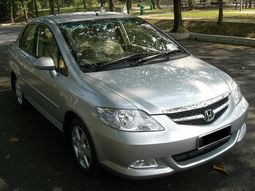
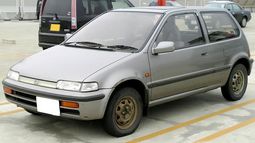
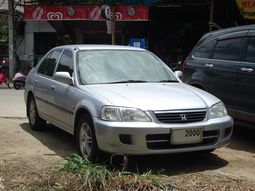
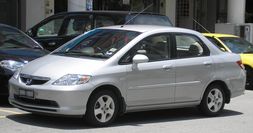
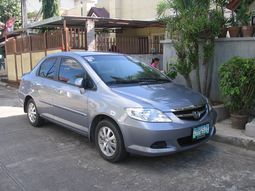
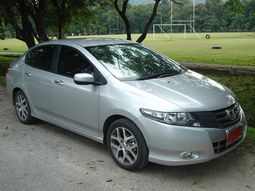
|